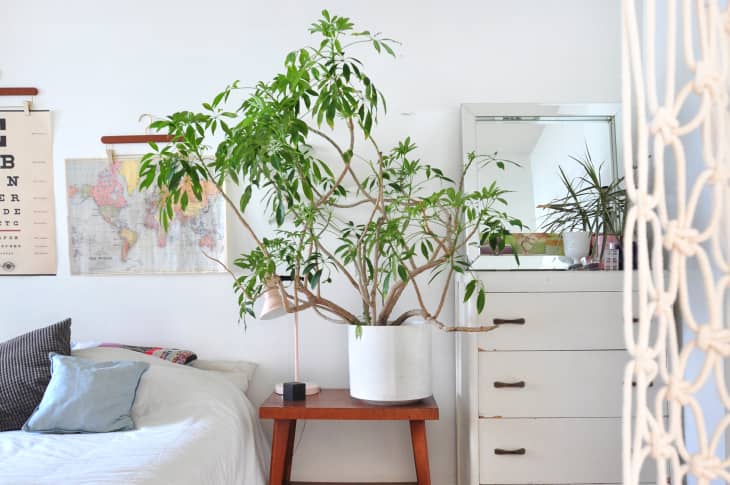How to Buy a Plant That You Can Actually Keep Alive

Plants are everywhere these days, and there’s no better time to become a first-time plant parent. But actually choosing a plant can be intimidating if you’ve never bought one before. Here’s what you need to know about navigating the whole experience.
Before You Go:
Do a little research
Odds are good that you’ve seen beautiful plants on social media. Bookmark a few options to show the sales associate when you get to the store. While those particular plants might not thrive in your abode, it will give you a jumping off point for discussion. A kalanchoe is not the same as a calathea, and they will know how to guide you in the right direction.
Know yourself and your home
Ask yourself some questions in advance: What kind of light do you get? How dry is the air in your home? What kind of care commitment are you willing to make? Do you travel a lot? Do you have pets? Small children? If you know the specific spot where you want your new plant to live at home, make a note of location and any pertinent features. Is it a dark corner, or near a radiator? Also keep in mind that plants don’t just get taller—they also grow in width—so plan accordingly.
While You’re There
Ask for help
There’s a benefit to buying a plant in person versus online. The lovely sales associates are there to help you, so don’t be afraid to ask them questions about light, watering, humidity levels, and pet toxicity. They should have plenty of advice to help you select the perfect plant for your living space, so you don’t rush into a purchase that you’ll end up killing (or despising) within the week.
Inspect your options
Find a plant that makes you happy. Pick it up and take a good look at it. Does the foliage look healthy or is the plant showing signs of distress? If the foliage is droopy, discolored, or crispy around the edges, be wary and try to find a different plant. Check the undersides of the leaves to make sure there are no signs of pests —no crusty residue, no white or brown specks. Take a peek down into the soil. Don’t make the mistake of bringing a plant home that has a bug infestation.
Grab a pot
If you’re also in the market for a new pot, this is a good time to buy one. Most plant shops will re-pot for a small fee.
While you’re browsing for a new vessel, keep in mind that a clay or terracotta pot will wick the moisture out of the soil faster than a glazed pot. Also, terracotta pots have the reputation for scuffing furniture, so make sure you stick some felt pads underneath the tray before you set it on your table or other surface.
It’s a good rule to size up two inches or so from the original grower’s pot. Succulents and other plants with shallow root systems can be squeezed into the same size or smaller pots. Tropicals and large trees need the room to spread out.
When you get home
Enjoy your purchase
Place your plant in its new spot and enjoy it. Take a few pictures. Upload it on social media. Be a proud plant parent! Be sure to tag your plant shop—who doesn’t wanna rep their new favorite store?
Ask follow-up questions
Don’t be afraid to reach out to the nursery or shop where you made your purchase. If you’re feeling lost or confused as a plant parent, reach out. Those businesses exist to help you with plant care questions and concerns. There are also lots of online plant groups out there (including our own IPlantEven Instagram account) where other plant lovers offer advice and will answer questions.
Remember, it’s a learning experience. If you end up with a dying plant, don’t be discouraged. Try again.
More of Our Popular Plant Posts:
- The Very Best Indoor House Plants You Can Buy
- 5 Houseplants You Can’t Kill by Overwatering
- The Dos & Don’ts of Growing Mint
- Keeping Your Pets Safe: 10 Non-Toxic House Plants
- The Easy-to-Grow Money Tree Is Also Considered Very Lucky
- You’re Going to Love The Low-Maintenance Rubber Plant
- Maidenhair Ferns Are Finicky Plant Divas, But Sure Are Beautiful
- 5 Overlooked Plants That Can Survive The Dark (Almost)
- Chill, Low-Maintenance Snake Plants Are Perfect for People Who Can’t Keep Anything Alive
- Houseplant Help: How to Save a Plant Whose Leaves Are Turning Yellow
- Chinese Money Plants Are Fairly Hard to Find But Pretty Easy to Grow
- Oddly Intriguing Indoor Plants You’ve Probably Never Heard Of